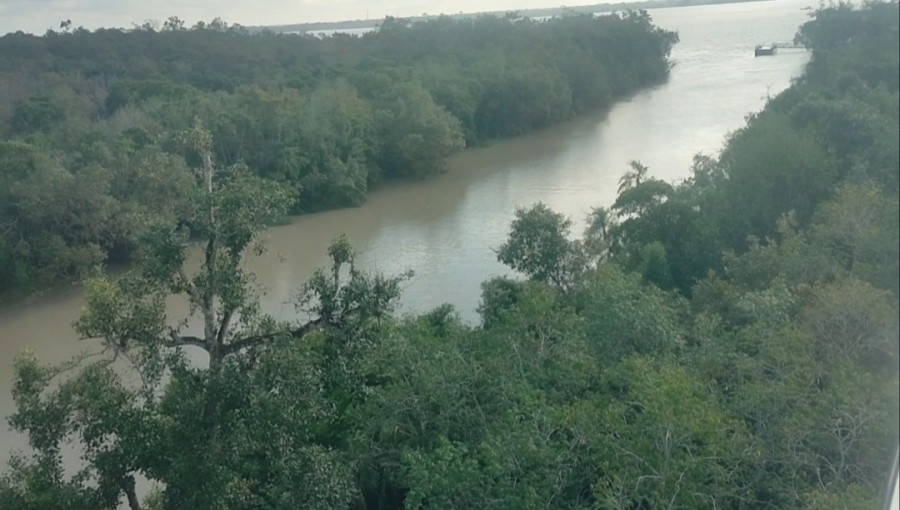Bagerhat, Sep 27 (V7N)- The tourism industry in the Sundarbans, one of the world’s largest mangrove forests, holds immense potential for economic growth and environmental education. However, due to insufficient planning and coordination among stakeholders—including the forest department—this potential remains largely untapped, hindering economic and social development in Bangladesh's southern coastal regions.
Despite being a globally recognized UNESCO World Heritage Site and home to the iconic Royal Bengal Tiger, diverse wildlife, and unique ecosystems, Sundarbans-centric tourism faces repeated setbacks. Experts emphasize the need for a more structured and eco-friendly approach to fully capitalize on the area's tourism opportunities while ensuring the conservation of its fragile environment.
According to environmentalists, the Sundarbans has the potential to become a major destination for both local and international tourists. Dr. Sheikh Faridul Islam, Chairman of the Save the Sundarbans Foundation, stated, "The Sundarbans eco-friendly tourism industry can enrich the national economy and create employment opportunities. However, strict guidelines must be followed to protect the forest, or the tourism sector will suffer in the long term due to improper planning."
The Forest Department has acknowledged the need for tourism-related initiatives that promote both environmental conservation and sustainable economic growth. Md. Azad Kabir, Officer-in-Charge of the East Sundarbans Karamjal Tourism and Wildlife Breeding Center, highlighted that several tourist spots have been developed in line with the Sundarbans Travel Policy of 2014. "We have increased the number of tourist spots, and more are being developed. Tourists are already impressed by the natural beauty, and we have trained forest guards to ensure that tourism does not harm the environment," he said.
However, local tourism experts and environmentalists believe that the government must take further steps to protect the Sundarbans’ natural features while expanding its tourism offerings. Md. Noor Alam Sheikh, Joint Secretary of the Bangladesh Environment Movement, said, "The Sundarbans' environment is highly sensitive, and any tourism activity should be designed to protect its biodiversity. Villages surrounding the Sundarbans should be transformed into eco-tourism centers, and stricter policies should be enforced to prevent pollution and protect wildlife."
One of the biggest challenges for tourism in the Sundarbans remains the lack of tourist-friendly infrastructure and the slow process of obtaining permits. These delays not only frustrate tourists but also limit the growth of the industry.
Despite these challenges, there are ongoing efforts to address these issues. The Cox's Bazar District Administration has expressed plans to launch more robust initiatives in the future, recognizing the critical role that eco-tourism can play in both economic growth and environmental conservation.
As tourism organizations and local authorities continue to explore ways to enhance the Sundarbans’ appeal while safeguarding its ecosystems, the region could soon see a boost in both domestic and international visitors. However, this will require a well-coordinated, long-term approach that balances tourism development with environmental preservation.
END/AHS/AJ































Comment: